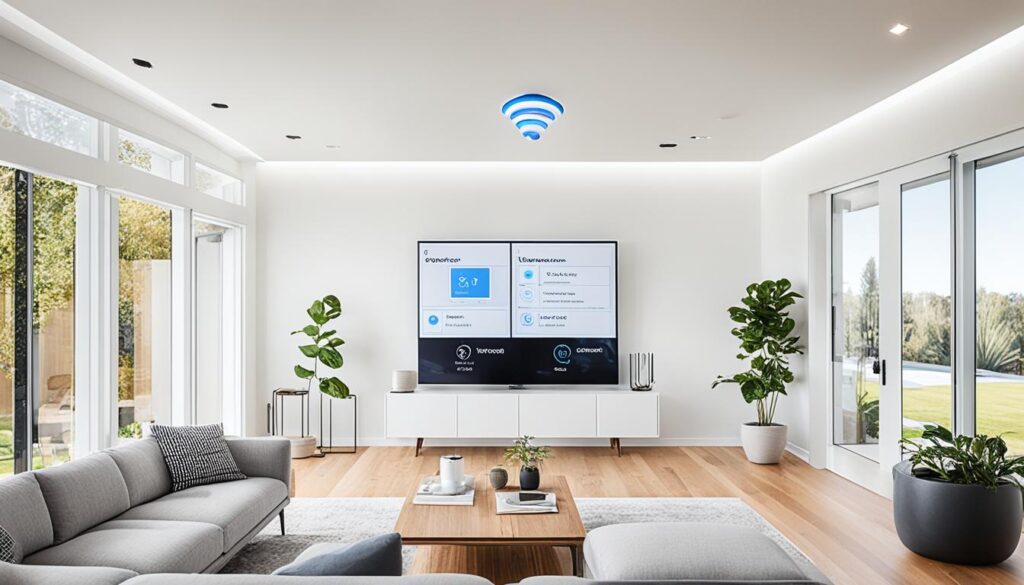In today’s connected world, having a strong and reliable Wi-Fi signal is essential for everything from work and education to entertainment and smart home management. However, many households struggle with weak Wi-Fi signals, which can lead to frustrating connectivity issues. In this blog, we’ll explore effective strategies to improve weak Wi-Fi signals at home, ensuring you enjoy seamless connectivity throughout your space.
Understanding the Causes of Weak Wi-Fi Signals
Before diving into solutions, it’s important to understand the common causes of weak Wi-Fi signals:
- Interference: Other electronic devices, such as microwaves and cordless phones, can interfere with Wi-Fi signals.
- Obstacles: Physical barriers like walls, floors, and furniture can weaken Wi-Fi signals.
- Router Placement: The location of your router significantly impacts the strength and coverage of your Wi-Fi signal.
- Outdated Equipment: Older routers and devices may not support the latest Wi-Fi standards, leading to weaker signals.
Optimizing Router Placement
One of the simplest and most effective ways to improve weak Wi-Fi signals is to optimize the placement of your router. Here are some tips:
- Central Location: Place your router in a central location within your home to ensure even coverage.
- Elevated Position: Position the router on a shelf or mount it on a wall to minimize obstructions.
- Avoid Interference: Keep the router away from electronic devices and large metal objects that can cause interference.

Steps to Optimize Router Placement
- Identify a central location in your home.
- Ensure the router is placed at an elevated position.
- Avoid placing the router near potential sources of interference.
Upgrading Your Router
If your router is several years old, it might be time for an upgrade. Modern routers offer better performance, greater range, and support for the latest Wi-Fi standards.
Benefits of Upgrading Your Router
- Improved Performance: Newer routers provide faster speeds and better overall performance.
- Better Range: Modern routers are designed to cover larger areas, reducing dead zones.
- Enhanced Features: Upgraded routers come with advanced features like beamforming and MU-MIMO (Multi-User, Multiple Input, Multiple Output) to improve signal strength and reliability.

Using Wi-Fi Extenders and Mesh Systems
For larger homes or areas with significant obstacles, Wi-Fi extenders and mesh systems can be invaluable.
Wi-Fi Extenders
Wi-Fi extenders amplify your existing signal, helping to cover areas that your router alone cannot reach. They are relatively inexpensive and easy to set up.
Pros:
- Cost-effective
- Simple setup
Cons:
- Can sometimes create a separate network, causing connectivity issues
Mesh Wi-Fi Systems
Mesh Wi-Fi systems consist of multiple units that work together to create a single, seamless network throughout your home. They are ideal for larger homes or spaces with complex layouts.
Pros:
- Seamless coverage
- Easy to manage through a single app
Cons:
- More expensive than extenders

Choosing Between Extenders and Mesh Systems
- For Small to Medium Homes: Wi-Fi extenders are typically sufficient.
- For Large Homes: Mesh systems offer better performance and coverage.
Minimizing Interference
Interference from other electronic devices can significantly weaken your Wi-Fi signal. Here are some strategies to minimize interference:
- Use Dual-Band Routers: Dual-band routers operate on both 2.4 GHz and 5 GHz frequencies, allowing you to switch to a less crowded band.
- Change Channels: Adjust your router’s channel settings to find a less congested channel.
- Reduce Electronic Interference: Keep the router away from other electronic devices, especially those that operate on similar frequencies.
Enhancing Security for Better Performance
Improving your Wi-Fi security can also enhance performance. Unauthorized users can consume bandwidth, slowing down your connection.
Security Tips
- Use Strong Passwords: Create a strong, unique password for your Wi-Fi network.
- Enable WPA3 Encryption: If your router supports it, enable WPA3 encryption for better security.
- Regularly Update Firmware: Keep your router’s firmware up to date to ensure optimal performance and security.
Network and Wi-Fi Optimization Services
For those seeking professional assistance, network and Wi-Fi optimization services can provide tailored solutions to improve your home Wi-Fi.
Benefits of Professional Services
- Expert Assessment: Professionals can assess your home and identify the best solutions for your specific needs.
- Advanced Equipment: Access to the latest technology and equipment.
- Custom Solutions: Tailored solutions to fit your home and lifestyle.
What to Expect from a Professional Service
- Comprehensive analysis of your current network setup
- Recommendations for equipment upgrades or adjustments
- Installation and configuration of new devices
- Ongoing support and maintenance
Conclusion
Weak Wi-Fi signals can be a major inconvenience, but with the right strategies, you can significantly improve your home network’s performance. From optimizing router placement and upgrading equipment to using extenders or mesh systems and minimizing interference, there are many ways to enhance your Wi-Fi signal.
FAQ Section
Q: How can I tell if my Wi-Fi signal is weak?
A: Common signs of a weak Wi-Fi signal include slow internet speeds, frequent disconnections, and difficulty connecting to the network in certain areas of your home.
Q: Will a new router really make a difference?
A: Yes, a new router can offer better performance, greater range, and support for the latest Wi-Fi standards, improving your overall network experience.
Q: Are Wi-Fi extenders difficult to set up?
A: Most Wi-Fi extenders are designed for easy setup, often requiring just a few steps to connect to your existing network.
Q: What is the difference between 2.4 GHz and 5 GHz Wi-Fi?
A: The 2.4 GHz band offers better range but slower speeds, while the 5 GHz band provides faster speeds but a shorter range. Dual-band routers allow you to use both frequencies.
Q: How often should I update my router’s firmware?
A: It’s a good practice to check for firmware updates every few months to ensure your router is running optimally and securely.
By following these guidelines and leveraging professional services when needed, you can enjoy a strong and reliable Wi-Fi signal throughout your home, enhancing your connectivity and overall digital experience.

From curious child to the President of WyreDreams, my journey started with a fascination for the wires behind my dad’s boombox. Today, I lead a team dedicated to transforming standard setups into exceptional audiovisual and smart home experiences.

